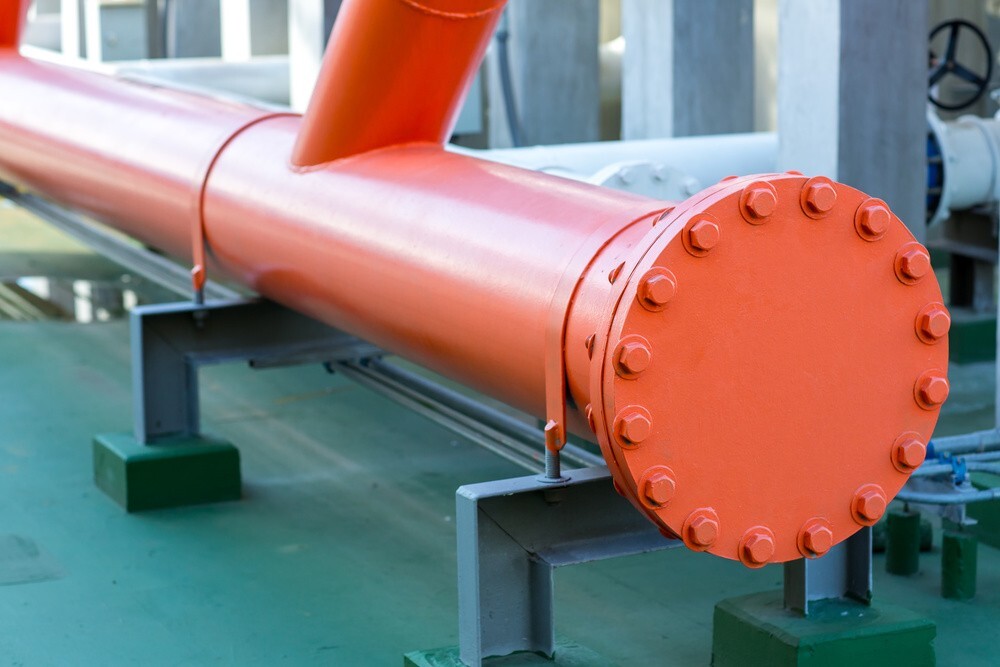What is Blind Flanges?

Blind Flanges are a type of flange that has no hole in it. This means you can't see the end of the pipe through the flange, hence "blind". Blind Flanges can also be referred to as Blank Flanges. Blind flanges are used to seal pipe and other materials in construction. Blind Flanges are usually found on one side or both sides of the connection, with the material sealed in between. These types of flanges can be made from many different materials including steel, aluminum, copper, brass and plastic. The most important consideration when selecting these types of blinds is the thickness.
The Purpose of Blind Flanges
Blind flanges are used to cover the end of a pipe and prevent fluid from escaping. This is especially important where pressure or entrained solids may be present in a line. Blind Flanges essentially act as caps for pipes, making them very effective at stopping leaks when installed properly. Blind Flanges are typically used to cap drill pipe, casing or tubing.
Correct Way To Install a Blind(Blank) Flanges
Installing Blind Flanges is a very simple and straightforward process. First, the end of your pipe must be clean and smooth with no burrs or dents present on any surface that will come in contact with the blind flange. The parts should be thoroughly cleaned using a degreasing cleaner and dried before assembly is started to ensure proper fitment as well as the prevention of corrosion, or seizing from occurring later on down the road.
Next you will need both your Blind Flanges (with bolts), Outer Sleeves, Inner Ring Spacers and Locking Nuts. When assembling, you will first place the Outer Sleeves and Inner Ring Spacers on your pipe (in that order), then lay both parts of the Blind Flange out so they are facing up (as shown in picture below).
When looking at a blind flange with the bolts installed, you'll see that one of the bolts is on top and the other is down below. You will want to make sure your locking nuts are tightened up against each other, then you'll place them over their respective bolt holes (the lower nut should go first).
You can now slide both parts of your blind flange together, making certain that all spacer rings are inside of the flanges. Once you have tightened down both locking nuts on their respective bolts, your Blind Flange will be fully assembled and ready to install onto your pipe.
Blank Flange Working Process
A blind flange is used to connect two or more pipes together without having a faceplate. The installation process for these types of flanges requires the pipe on one side be beveled and flattened, which allows the otherside's surface to form flush with it. That way when you tighten down the bolts holding them together they create pressure and seal between the two surfaces.
Varieties Of Blind Flanges:
At shacha technoforge, we manufacture steel blind flanges in different varieties. Check varieties of it below:
- A36 steel plate
- Stainless Steel 304 and 316
- Carbon Steel Flange (CSA W47.0)
Applications:
Blind flanges are commonly used in construction as piping or equipment support. They help maintain the pressure of fluid flow, and provide a safe space for conducting electricity. In addition to these typical uses, blind flanges can also be an important tool when using steel pontoons in bridge building projects. The following is specific information about how they are used in some of these projects.
Construction Applications for Blank Flanges:
In construction, blind flanges are typically used to connect individual piping components and provide a safe place to conduct electricity between the two connecting points. They are also commonly found in equipment support applications such as conveyor systems or oil pumps where it is important that fluid flow and pressure is not compromised over time.
Blank Flanges in Bridge Construction:
Steel pontoons are used to support the framework of bridges, and they require blind flanges for installation as well. These allow for access between the individual components while maintaining a watertight seal against the surrounding environment, preventing corrosion or leakage from occurring where it can do the most damage.
Advantages:
There are many reasons why you should use blind flanges. Blind flanges have a much higher pressure rating than most other types of flange because they can be installed without bolting the bolts to the pipe, which allows them to take up less space in tight spaces where it is not possible for two people to fit at once. The gasket between the pipe and the flange can be one that is more suitable for your application. For example, if you are using a chemical product which uses an adhesive to keep it in place then you may not want a metal based gasket as this could corrode when exposed to chemicals such as those found with PVC piping.
Most Frequently Asked Questions About Blind Flanges
1. Does a Blind Flange Require a Gasket?
Blind Flanges do not require a gasket to work. It is used as an alternative form of connection when there are confined spaces, or for limited access applications where it's been difficult to provide the usual flange and bolting. The blind flange can be installed in place of traditional spool pieces that would typically have either multiple flanges or bolted connections.
2. Will Blind Flanges work as spacers?
No, Blind Flanges are not spacers. A spacer is a separate piece that sits between two other things to keep them apart or at the right distance. Blind flange installation only requires their use in one of these places: either on the pipe ends for multiple pipes and/or valves (for example, it could be used where a valve sits on top of another pipe), or the flange could go between a floor and wall where no other space exists (for example, a concrete slab next to drywall).
